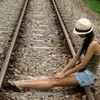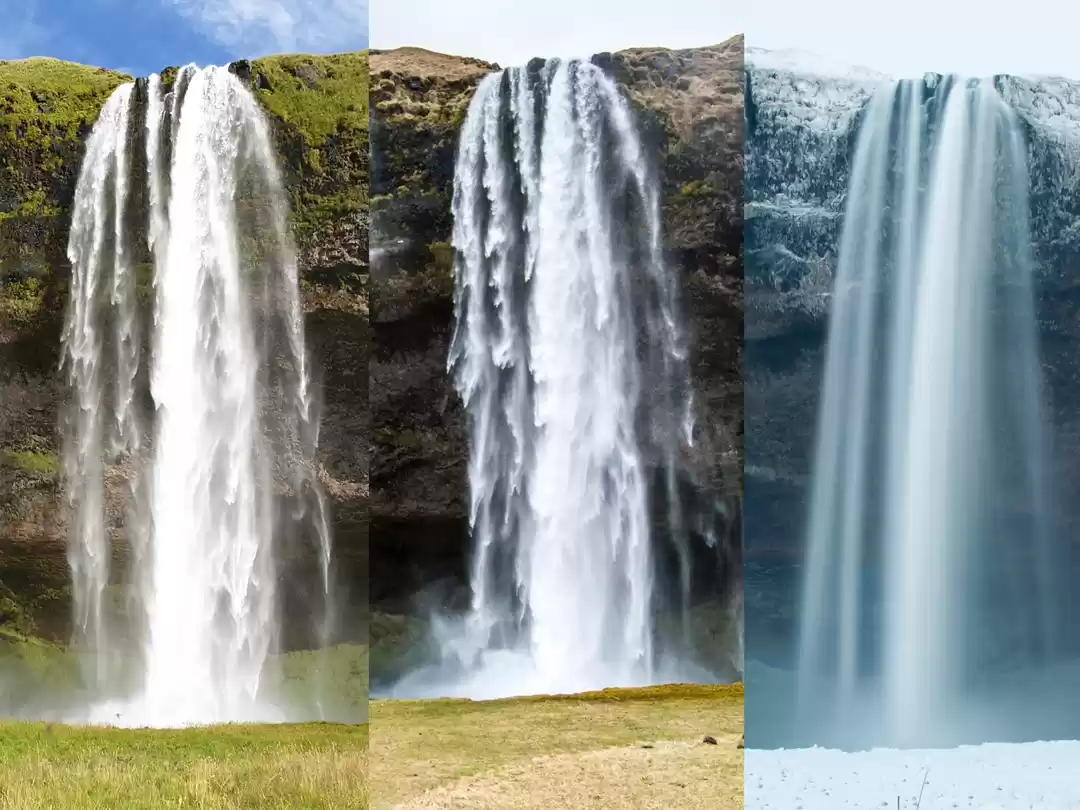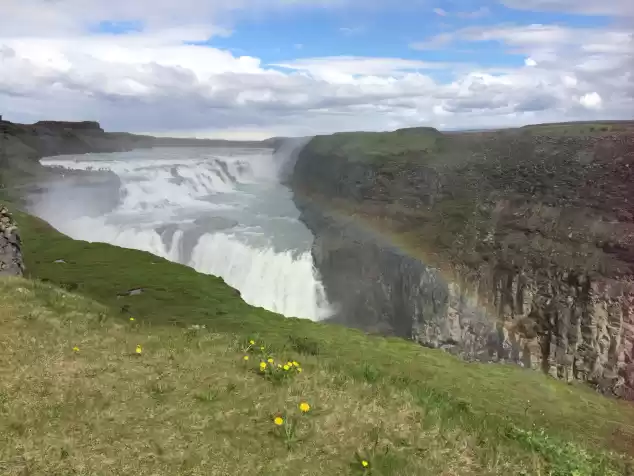
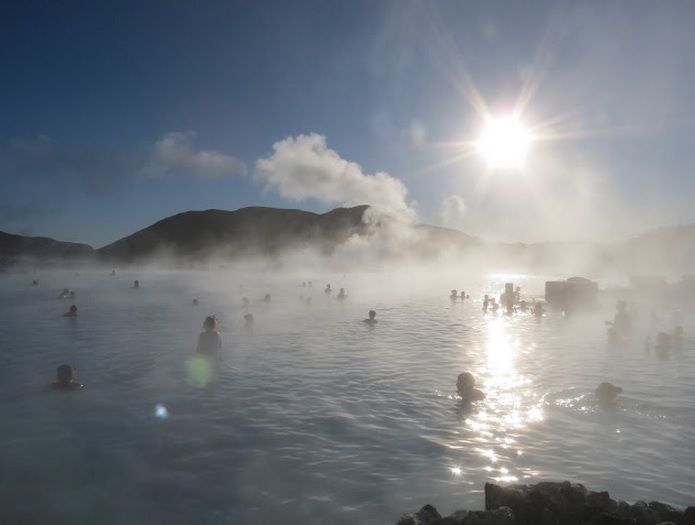
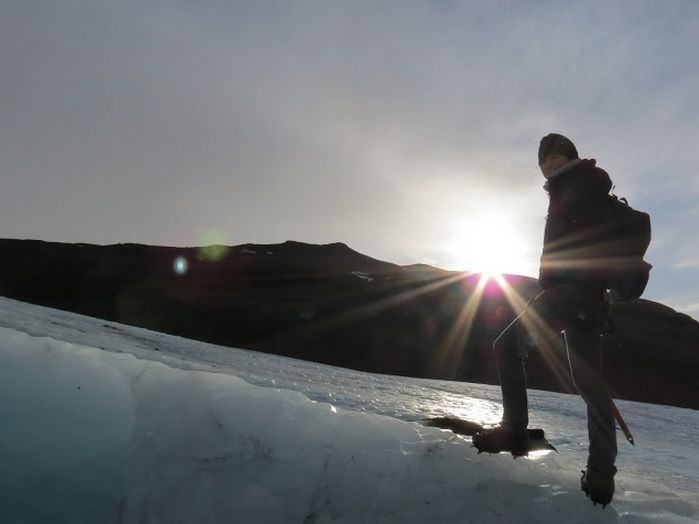




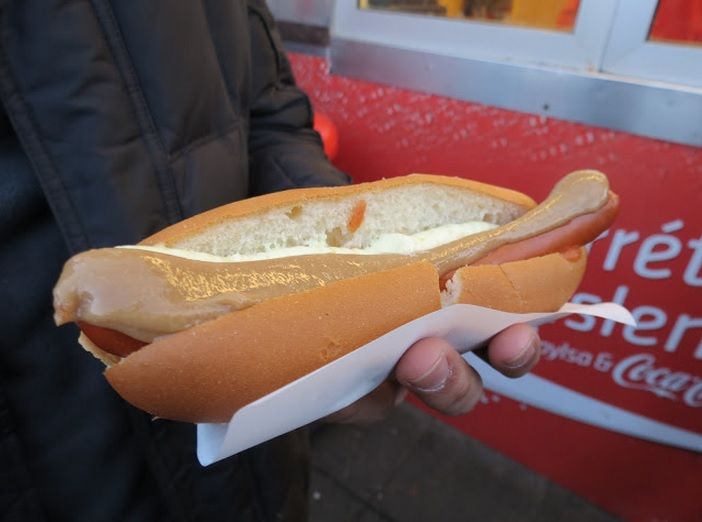





"On earth's part all days start beautifully patiently it revolves and revolves with its trees and oceans and lakes deserts and volcanoes the two of us and the rest of you and all the animals"
Pétur Gunnarsson
Greeting you at the Keflavik airport, this quote really captures the essence of Iceland. It's a highly misconceived place, and people often speak of Iceland as a massive piece of ice block - cold and abandoned. But there's definitely more to that naive perception, for it's unspoken charms and God created landscapes really take your breath away even as the winds blow straight from the Arctic circle.
Icelanders speak English with a disarming charm. But when it comes to speaking their native language, I've read in travel journals that they have a soft expression in Icelandic - "haa.." expressed to display an enthusiastic yet subtle agreement. A travel writer describes it as a 'soft wordless gasp built into their language', and the silence after each short reverberation seems like the sound of breath being taken away: as if the sound of wonder is central to being Icelandic (credits to Bill haydes). I love this view, because it speaks of Iceland's haunting beauty and it's quirky charms all in the name of a breathless haa.
With her relatively uncharted beauty and as one of the Nordic island countries located in the juncture between the North atlantic and the Arctic oceans, Iceland is no doubt one of the most beautiful places on earth. Topping it with the thrill of being 7000 miles away from home and the disarming charm of the locals, it was indeed a memorable trip that I would love to relive again someday - even the cold Arctic wind was an experience in itself.
And of course, a trip to Iceland isn't complete without chasing the Northern lights (but really, the landscape and road trip was the highlight of the trip in itself). The aurora season in Iceland is said to be from October to March, and especially high during the winter season. We were there in February during winter so I was pretty thrilled to finally got to witness the magical lights on my bucket list! Doing some research and gathering information from fellow friends who have been there, the best times to catch them is when the temperatures dip and the skies are dark. There is no scientific explanation for its occurrence on cold nights, but there is a correlation between low temperatures and clear skies - which is a significant factor for the occurrence of the aurora (thank you D for educating me on this). We weren't very well versed in forecasting the aurora, so for the first night we decided to join a Reykjavik tour bus which drove us out of the city and subsequently back after the sightings. It wasn't very exciting because the intensity was really low and it was overall pretty disappointing, but we realized that you don't have to drive very far out from the city to be able to catch them! So we decided to drive out the next night with our rental cars - the drive took about 30-45 minutes, and we headed towards the plateau area in the direction of Þingvellir National Park. If you're driving, it's out of Reykjavik via highway no. 31 proceeded by no. 53. We just drove along in the general direction until it was dark enough and found a good spot to stop....that was the hard part because there were no street lights and we didn't want to wander off the street into several inches of snow. Nonetheless, we found a spot off the small road and perched ourselves outsides until it got too cold and we retreated back into the warmth of the car. Dress well because it got really cold, especially when the draft comes! Even with heat packs (typical tropical being here, sorry), my hands were still freezing so it was beyond the understanding of my tiny brain on how R could lie on the snow paved sides.
Nonetheless, the lights came dancing on and off and it was terribly surreal! It wasn't very overwhelming, but it was definitely magical to see the skies light up right before your eyes. It was, however, beyond the abilities of my camera (it's not an DSLR) to capture these moments so I present you the stark contrast between a shot captured by a professional camera (picture credits to Rebecca) and my embarrassing digital camera shot below. The orange lights come from the city, and are not part of the aurora unfortunately.
Ice picking our way through on the glacier walk on Sólheimajökull Glacier was quite the dream. Although we were guided through the labyrinth of a glacier tongue extending down from the fourth biggest glacier in Iceland, the cold winds and the sudden mild blizzard didn't help. The architecture was majestic, but it was slightly daunting to be enveloped by tall mountain ranges in the distance. You feel like you're buried in a whiteout, surrendering to God's amazing creations.
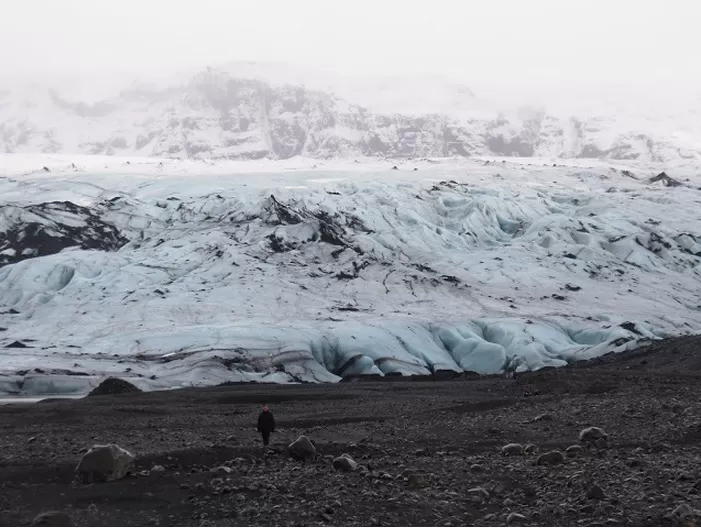
Driving out of Reykavik (Rey-kya-vik) armed only with maps and a GPS was one of the best scenic road trips I ever had, combing through the extensively unspoiled nature. We took the Golden circle route in South Iceland initially, covering about 300km looping from the main city district into central Iceland - this got us through Pingvellir national park (a UNESCO world heritage site), lunch at Gullfoss waterfall (translated as 'golden falls') which was one of the most painful lunches I had as I couldn't feel my hands, much less savour my ham sandwich, and Haukadalur, an active geothermal valley which had Strokkur and Geysir geysers. Driving up North, we explored Pingvellir, Glymur and the Hvalfjordour region, and stopped by small towns like Akranes, Borgarnes and Hellnar, just to poke our noses into how countryside Nordic life is like. Some of our leisure drives also found us looking out for Kerið crater and 101 other waterfalls including Seljalandsfoss and Skógafoss along a coastal drive. Others found us mounting random hills (okay, mostly the guys) and walking on thin ice.
The main roads are smooth to drive on, and some roads and sidewalks branching out from Reykavik are heated by geothermal energy to melt ice (not that we even realized, but we read about it). But if you steer off the beaten path, you may find yourself well in several inches of snow or gravel.

Renting a car from Sadcars, we poked our noses into countryside Nordic life along the island's west coast. We headed North from the city of Reykjavík and drove towards the direction of the Snæfellsnes Peninsula - going through the Hvalfjörður tunnel and making pitstops at the towns of Akranes, Borgarnes and Hellnar. These spots were randomly picked out by us on our paper maps, but just remember to select them properly on the GPS and you're set to go. We had a peek into the local neighbourhood as the towns turned out to be hidden gems on our road trip. We also somehow walked into the back alleys of a fishing factory, not surprising as the fishing industry is pretty big in the country. I think the local workers were rather amused to see us, but were friendly enough to say hi! Looking back, I love how the arctic coastline and the occasional Nordic wooden house blended into an unassuming composition with the background mountain range, exuding such a quintessentially Icelandic charm. Even a simple stroll along the beach envelopes you in awe as the snow capped mountains stare down on you - God's creations are sure sublime.

There are many chances to stop along the West coast route to take in the landscapes - these were taken enroute back to Reykjavik, love how the setting sun casted a golden tinge when we stopped for some Icelandic ponies. I've seen many of them grazing along the roads but because I gave R barely 100m of leeway distance to brake and make a pitstop each time, we had to give them a miss time after time. It was lovely that we got to finally stop and spend some time admiring these docile creatures ♥ Along the way back, we got to witness the setting sun with gradients in the sky, such an unforgettable sight!

One of the last things we did in Iceland was to make our way down to the Blue lagoon, a geothermal spa located in the South. It was an interesting experience to dip into the outdoor thermal pool set in a lava field, for the refreshing warmth was extremely comforting in the winter cold! The water is said to be extremely rich in minerals, which is excellent for the skin and health. They also had a special mud mask available that you could scoop a generous amount to slab onto your face, and later wash off with the water. Compared to Japanese onsens, the water was not boiling and was at a comfortable 40 degrees celsius max, but it also did not reek of sulphur which was a pleasant delight. There was nothing much beyond the pool for the standard ticket price (a whooping Euro 33 per entry), unless you purchase premier packages for the renowned spa, hotel and restaurant facilities. Being only 20 minutes from the international airport, it's a perfect layover stop if you happen to transit in Iceland.

For its size, Reykjavik is a relatively modern city, only being found in 1786 and urbanely developed in the 18th century. Even though visitors are often distracted by the countless natural wonders surrounding this capital city. Reykjavik does have much to offer on its plate, be it for culture, history or dining. The downtown area has a quiet sentiment, which is far cry from the hustle and bustle of a metropolitan city, hence it was a refreshing change. Walking around at night felt safe, and you can very often get a glimpse into the Ikea-look-alike apartments while walking in the streets as their windows tend to be wide open. I love the balanced mix of the modern city and the natural wonders in the background! We didn't dedicate much time at the start for exploring the city, but we compensated for this during our last few days of the trip. It's a beautiful sight to just walk along the coastline, which is minutes from the downtown area. The views were equally stunning, as you can see the mountain ranges in the distance as well as enjoy the coastal breeze. Seems perfect for leisure city cycling and stone throwing. I really enjoyed the unobstructed view of the sky because of the low buildings and the mountain ranges in the far distance - something a metropolitan city can never offer.

As mentioned, even the downtown streets have a peculiar quiet charm about them! Commercially, there are the usual international brands that are housed here as well as local craft shops which support Scandinavian designers. There are also tons of souvenir shops in the belt of Kringlan, which stocks merchandise from puffin plushies to viking hats. We were amused by a restaurant logo which resembled the London tube logo, which caught our eye almost immediately. There's a small tourist office located at Adalstraeti 2, 101 Reykjavik if you happen to get lost.
You can also get glimpses of the mountain ranges or the Hallgrimskirkja church, which is a tall building with staggered step-like architecture with a bell tower (you can pay 6 Kronas to get to the top for a panoramic view of the city.)

Built in 1909, the white wooden house is said to be the most historical and beautiful buildings in the city. It marked the venue in which the end of the Cold War was effectively official, hence the historical significance. now, it's owned by the city officials and is used for official receptions and meetings. It's interior is not open to the public, but you can explore the house from outside, peeking through the windows and using the explanatory panes outside as a history guide. It is located at Borgartún, 105 Reykjavík and is overlooking the waterfront.

If you type "Iceland hot" into Google, the second keyword you get is hot dogs, and boy are they right! I'm no fan of hot dog buns but this really made it in my good books. If you happen to travel down to Iceland, please do yourself a favour and go down to Bæjarins Beztu Pylsur to grab a standard hot dog snack. Serving them for more than 60 years, the stand's name can be loosely translated as 'Town's best'. The bits of crispy onion and honey mustard blends well together to bring out the flavour of this humble snack, we loved it so much that we snagged some last-minute ones en route to the airport. They cost 280 ISK.

The old harbour area of the city is gorgeously colourful and exudes a certain vibrancy, it's home to many marine activities where you can take a boat out for whale watching and puffin tours. I loved the stillness of the harbour, which reflected the pink gradients of the sky perfectly - it felt almost surreal to have captured the moment. It was also hard to imagine that the harbour used to be bustling with activity! There are also rows of restaurants by the harbour which offers a good view whilst being in the warm indoors - we went into Höfnin which is located at Geirsgata 7, 101 Reykjavik, Iceland, and they serve a mean lobster soup. I wasn't a fan of the thick soup after a few sips, but the lobster was fresh and it was really unique. Some of us also tried reindeer balls (meatballs) and fish dishes.

Located in the city downtown area of Aðalstræti, 101 Reykjavik, Iceland, we came to know of Fiskmarkaðurinn through visitor guides and subsequently made our way down for a special meal at this lavish restaurant one fine night. Loosely translated as 'fish market', the restaurant offered a repertoire of exotic Icelandic meat, ranging from puffin to whale to cod. Each dish was presented beautifully, and the service was great! Although it was a pretty lavish restaurant, it seemed really popular and we waited close to an hour for a table for 8. We were told that we were lucky to have been able to get a table without making reservations, so I'm guessing booking beforehand would have been a good move. I can't remember which dish is which, but we had appetizers to share like puffin, whale, beef,, our main courses were a good mix of monk fish, cod, bass, volcano maki, etc. They were all pretty decent, but our Singaporean taste buds had us concluding that puffin tastes like char siew and whale tastes like fishy beef.


